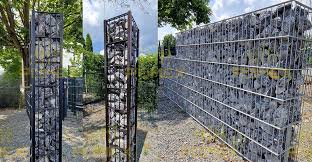When it comes to the landscaping process and erosion prevention, choosing the right type of retaining wall can significantly improve both aesthetics and functionality. Two options that are popular include gabions (gabiony) walls as well as traditional retaining walls. Understanding their differences will help you make an informed decision based on the requirements you have.
Gabions:
Gabion walls are constructed using cages made of wire that are filled with stones or other substances. The main benefit is their the flexibility. The mesh can be customized to different shapes and sizes and shapes, which makes gabions perfect for irregular or uneven terrain. They provide excellent drainage since the gaps between rocks permit water to flow through, reducing hydrostatic pressure behind the wall and minimizing erosion.
Gabion walls also feature a natural, rustic style, seamlessly blending into the environment. They are fairly simple to construct, and require smaller amounts of grading work than traditional walls. Additionally, gabions are highly robust and are resistant to weathering although the wire mesh could be corroded over time if it is not properly maintained.
Traditional Retaining Walls:
Retention walls that are traditional usually constructed using concrete, stone or brick. They give a more structured and formal design, which may be ideal for certain types of landscaping. They are well-known for their strength and stability particularly when designed in a proper manner with appropriate footings and reinforcements. This makes them suitable for supporting large amounts of soil, or in areas with substantial elevation shifts.
However, traditional walls can be more costly and time-consuming to install as compared to gabions. They also require careful planning to control drainage efficiently, as inadequate drainage can result in pressure build-up, and the possibility of structural failure. Maintenance is another consideration While stone and concrete are strong, they may develop cracks or require resurfacing over time.
Conclusion:
The decision between traditional retaining walls will depend on your individual desires and needs. Gabions offer flexibility, ease of installation, and superior drainage, making them ideal for natural and varied landscapes. On the other hand traditional retaining walls give solidity and strength, as well as a elegant appearance, which is ideal for formal designs and large soil support. Examining factors such as aesthetics, cost, and drainage requirements will help you select the best option for your particular project.
